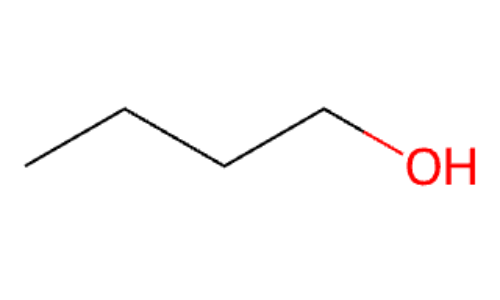n-Butanol is an organic compound that typically appears as a clear, colourless liquid with a characteristic alcohol-like odour. It is widely used as a solvent in the production of paints, coatings, and resins, as well as a key intermediate in the manufacture of plastics and textiles. n-Butanol is produced through the fermentation of sugars or via petrochemical processes, making it versatile in both industrial and bio-based applications. While generally considered less hazardous than many industrial chemicals, it is flammable and can cause irritation to the skin and eyes with prolonged exposure. The chemical formula of n-Butanol is C4H10O.

| CAS Number: | 71-36-3 |
| UN Number: | 1120 |
| Hazard Class: | 3 |
| Packing Group: | III |
What is the CAS Number of n-Butanol?
The CAS number of n-Butanol is 71-36-3.
What is the UN Number of n-Butanol?
The UN number of n-Butanol is 1120.
What is the Hazard Class of n-Butanol?
n-Butanol is in Hazard Class 3.
What is the Packing Group of n-Butanol?
n-Butanol is in Packing Group III.
Physical properties of n-Butanol
Safety profile of n-Butanol
All the safety information for n-Butanol can be found in our MSDS (material safety data sheet) below. It includes information on first aid, accidental release, fire-fighting, handling and storage, personal protection and much more. Please familiarise yourself with the hazards before handling it.
FAQs
n-Butanol is a versatile chemical used across various industries. It serves as a solvent in the production of paints, coatings, and varnishes, ensuring smooth application and drying. It is also a key ingredient in the manufacture of plasticisers, textiles, and adhesives.
Additionally, n-butanol is used as a raw material in the production of butyl acrylate and butyl acetate, which are essential in making plastics and synthetic resins. Its role in the formulation of cleaning agents and as a fuel additive further highlights its industrial significance.
At East Harbour Group, we specialise in providing customised shipping solutions for your n-Butanol requirements. Regardless of the volume or destination, we offer personalised quotes designed to simplify your logistics and enhance your supply chain. With a skilled team dedicated to ensuring timely delivery, we provide efficient and reliable shipping for all your n-Butanol orders.
Let us know your needs, and our sales team will handle the rest, ensuring a seamless and stress-free experience.
Certainly! We excel in providing cost-effective and reliable chemical transportation services across the globe, whether you're located in Europe, Asia, or beyond. With offices strategically positioned in the UK and India, we ensure your delivery reaches you on time and within budget.
If you’re looking to arrange n-Butanol delivery and need assistance with logistics, don’t hesitate to get in touch. We’re ready to help with all your international shipping requirements.
n-Butanol comes with six hazard statements:
H226: Flammable liquid and vapour.
H302: Harmful if swallowed.
H315: Causes skin irritation.
H318: Causes serious eye damage.
H335: May cause respiratory irritation.
H336: May cause drowsiness or dizziness.
n-Butanol is a highly flammable substance, and should be kept well away from any sparks or sources of ignition. If the chemical comes into contact with skin, eyes or the body in general, people are advised to try to rinse the chemical from their skin or eyes, and immediately call the poison centre or doctor for advice.
IF YOU WANT TO LEARN MORE ABOUT HOW EAST HARBOUR GROUP LTD CAN HELP YOUR BUSINESS, GET IN TOUCH.
